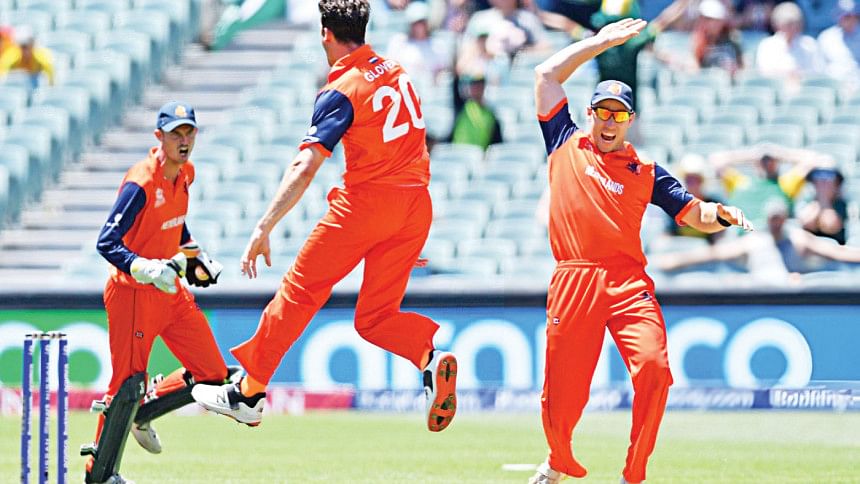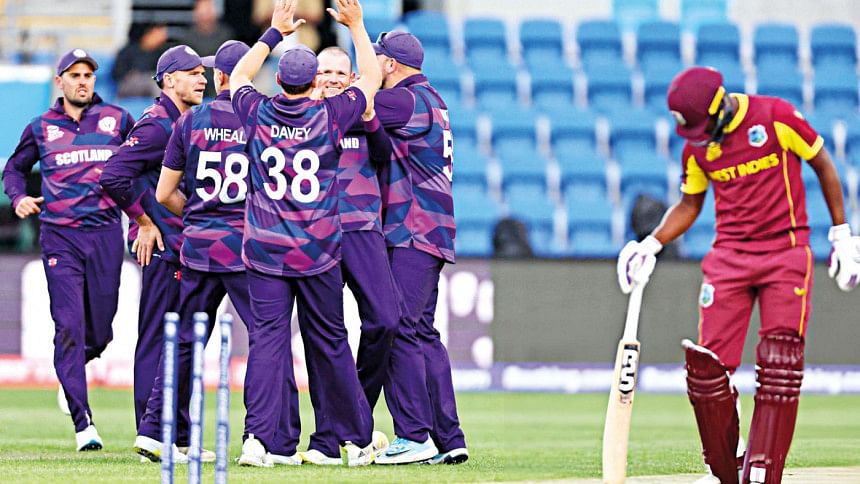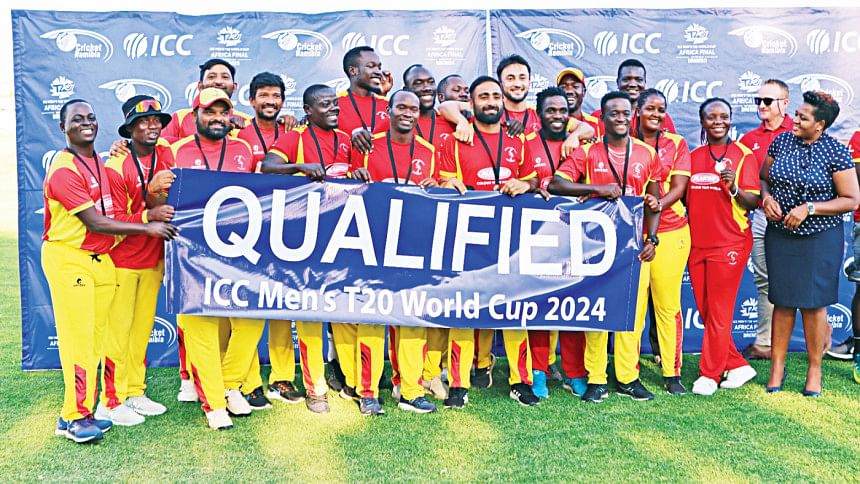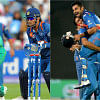Associates finally get their moment in the sun

Cricket hates newbies.
Even though cricket is a global game which in terms of popularity is only behind football in the world, the people running the sport have always been sceptical about letting new teams join the ranks of the established names.
This tendency becomes apparent looking at the number of teams in recent ODI World Cups, which has been on the decline since 2011.
After having 16 teams compete in the 2007 edition, ICC reduced that number to 14 in the next two editions before bringing it down to 10 in the 2019 and 2023 editions, which was insufficient to accommodate the 12 Test teams, let alone the associates.
Out of the 108 nations that are part of the ICC, only 12 are full members. The remaining 96 are all associates, stuck in the backwaters of cricket, struggling away for a chance to make it to the elite level with very little attention being paid to them.

The lowering of the number of berths in the ODI World Cup was a clear sign of the cricket world's apathy towards associate nations. However, as sort of a compensation for the reduced spots in the ODI World Cup, the ICC increased the number of participants in the T20 World Cup.
In the first four editions of the T20 World Cup, from 2007 to 2012, 12 teams took part. But from the 2014 edition, which was hosted by Bangladesh, the number of competing teams was increased to 16, and it remained so for the next four World Cups.
More associate teams now had the opportunity to compete in the biggest stage in Twenty20 Internationals. To make it to the dance, however, these teams had to go through a treacherous qualification process, where they scratched and clawed against teams that were as desperate as them to make a mark.
After completing this long and winding journey, a select few teams like Nepal, Namibia and Oman made it to the World Cup, where they got to compete against their heroes, test themselves against the very best in the game and get a taste of the greatest tournament the shortest format of the game has to offer!
No, not quite.
Well, technically they did compete in the World Cup. However, they took part in the first round of the competition, alongside a few lower-ranked full members, while the top teams automatically made it through to the second phase.
Officially, the first round was part of the World Cup, but everyone, from the fans, the organisers, the broadcasters and even the cricketers themselves, knew in their hearts that the second round was where the actual World Cup began.

In 2014 and 2016, only the group winners from the first round went through while in 2021 and 2022, the first and second teams from each group went onto the second phase of the tournament, where the big boys were waiting for them.
On paper, six non-Test playing teams took part in the T20 World Cup in 2014 and 2016 while five and four associates competed in the next two editions respectively.
But in reality, those teams endured a lengthy and highly competitive qualification process only to compete in another unofficial qualifying round for a chance to play in the actual World Cup.
After four T20 World Cups with this tournament structure, the ICC changed it up for the 2024 edition.
The change that garnered the most headlines was that this time 20 teams would be taking part, making it the biggest edition in the tournament's history.
However, the change that was arguably more significant was ICC moving away from the first round structure of the previous four editions. Gone are the thinly-veiled qualifying round matches as this year all 20 competing teams will begin the competition from the same phase.
The qualification process also changed quite a bit. In the previous four editions, top teams from the regional qualifiers, teams eliminated from the first round in the previous edition and other highly ranked teams who did not secure direct qualification, competed in a global qualifier for a place in the World Cup.
This time around, 12 teams got automatic entry, while the eight remaining slots were decided through regional qualifiers. The top two teams from Africa, Asia and Europe along with one team each from the Americas and East Asia Pacific region made it through.
This tournament structure should have allowed for eight associates along with 12 Test teams. But in the African qualifiers, Uganda disrupted those equations, upsetting Zimbabwe and taking their place in the T20 World Cup.
The inclusion of nine associate teams is unlikely to have any significant effect on the tournament's title race as a place in the Super Eight phase is the ceiling of the associate teams' dreams in this World Cup.
However, in T20 World Cups over the years, the associates have often found a way to make their mark.
Even in the previous edition in Australia, the Netherlands pulled off an upset win over South Africa, which led to Pakistan going through to the knockout phase and reaching the final, where they lost to England.
The Netherlands have been quite the giant killer in T20 World Cups, having beaten England in 2009 and 2014.
Namibia, who are set to compete in their third straight T20 World Cup, defeated Sri Lanka in the first round in the UAE in 2021 while in 2016, Afghanistan defeated the eventual winners West Indies in India.
Bangladesh have been a victim of a few upsets, with defeats to Ireland (2009), Hong Kong (2014) and Scotland (2021).
These upsets add unpredictability in World Cups, which adds to the excitement. With nine associates taking part this year, more such upsets are on the cards, and isn't that what makes World Cups so special!
The next three editions of the biennial tournament, set to be held in 2026, 2028 and 2030, are also set to include 20 teams, which is a step in the right direction for cricket's globalisation.
The jury is still out about whether the current world cricket administration has changed its outlook towards associate nations. But the change in the T20 World Cup model, making the USA a joint host in this edition and the inclusion of T20 cricket in the 2028 Los Angeles Olympic Games, indicates that the honchos at the ICC are trying to use T20s as a tool to expand the game globally.
But the change in direction from ICC is unlikely to make authorities of top cricket nations loosen their iron grip on the game, remove their hypothetical monocle and realise that expansion is the future for international cricket.
So, even though nine associate teams will get their moment in the sun in this World Cup, cricket's hate for newbies is still very much present and is unlikely to go away anytime soon.

 For all latest news, follow The Daily Star's Google News channel.
For all latest news, follow The Daily Star's Google News channel. 








Comments